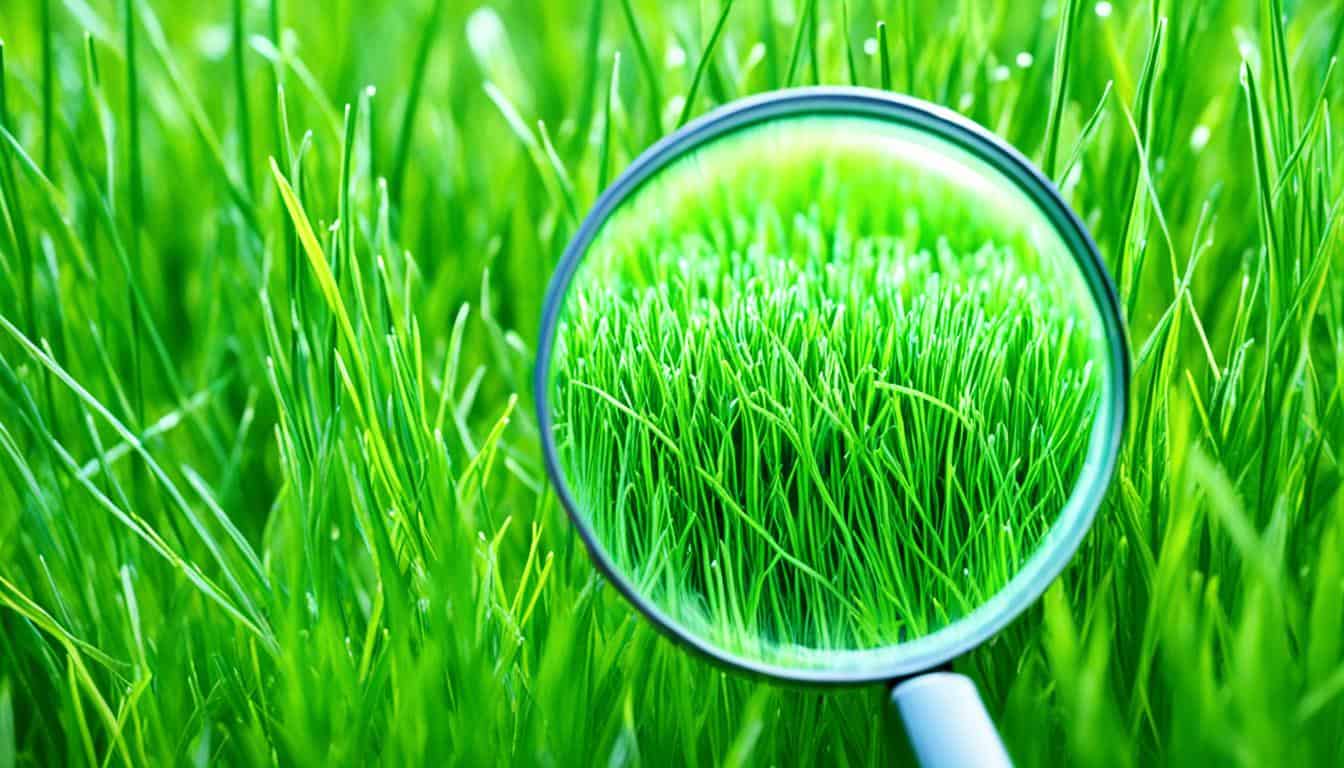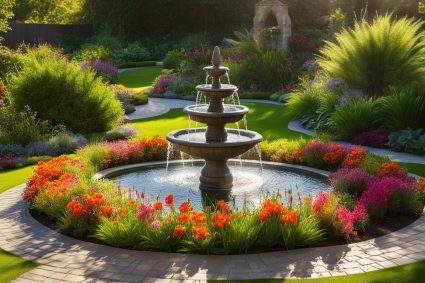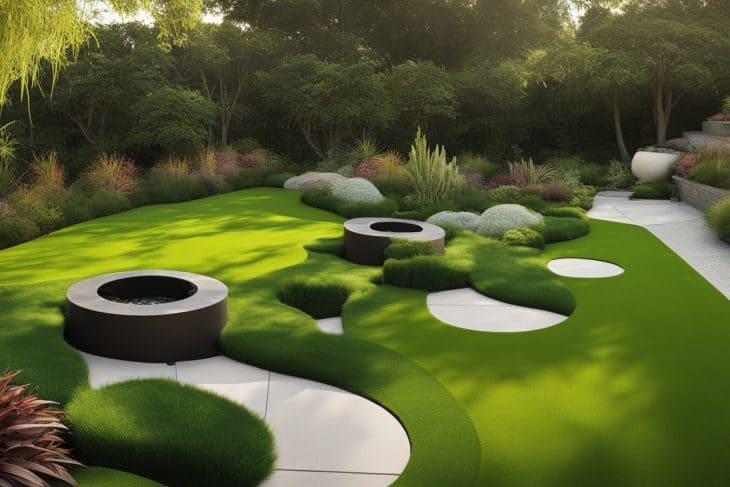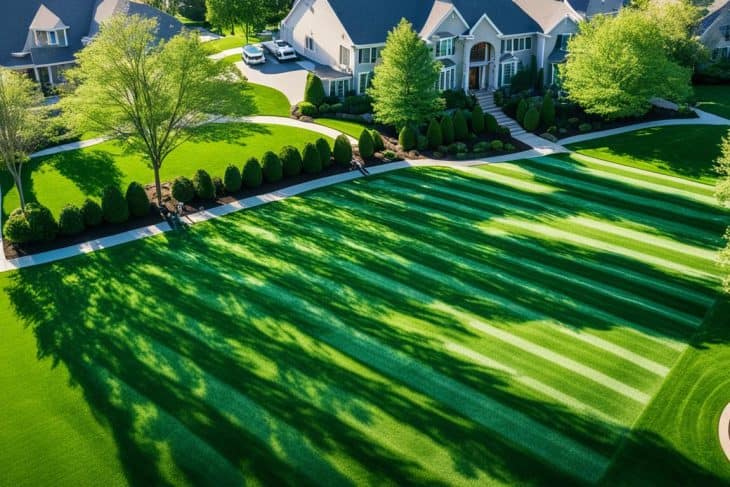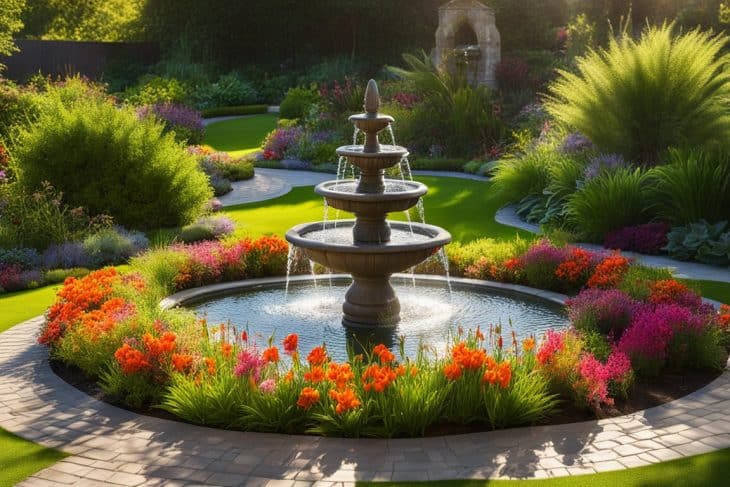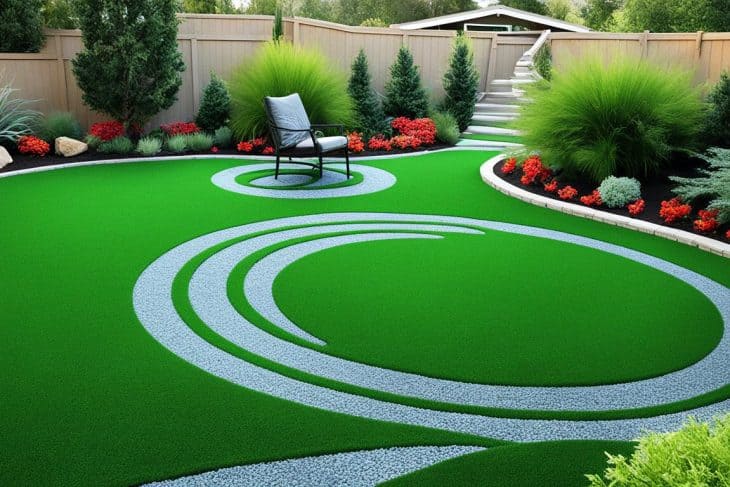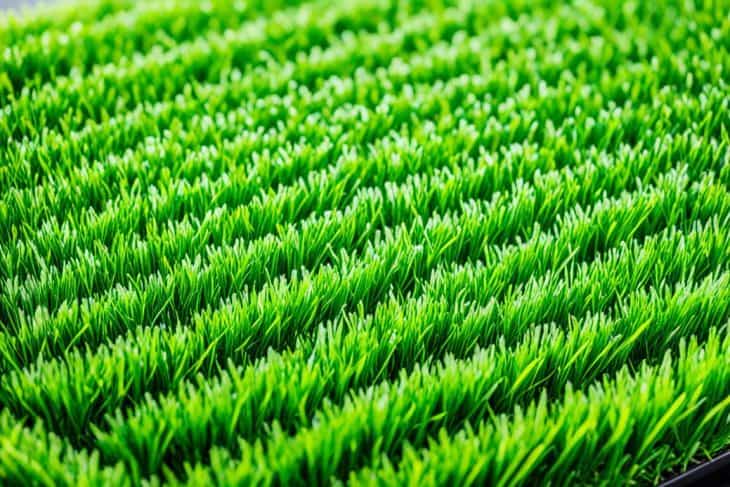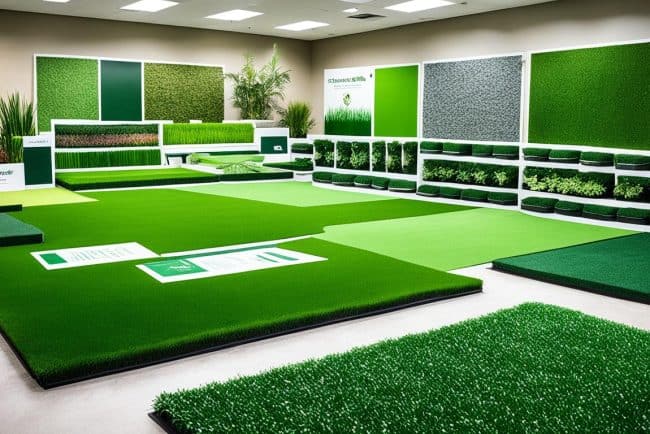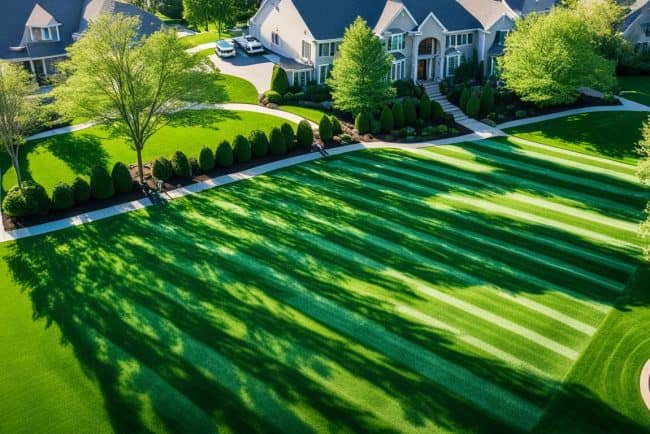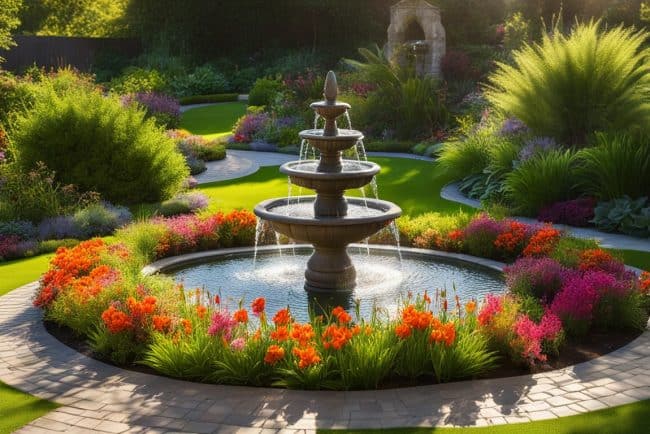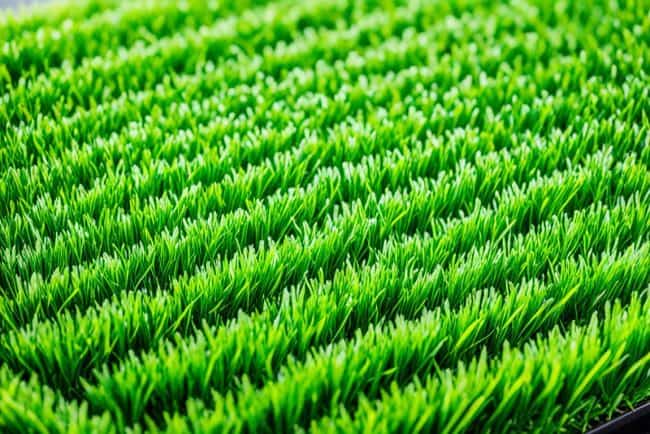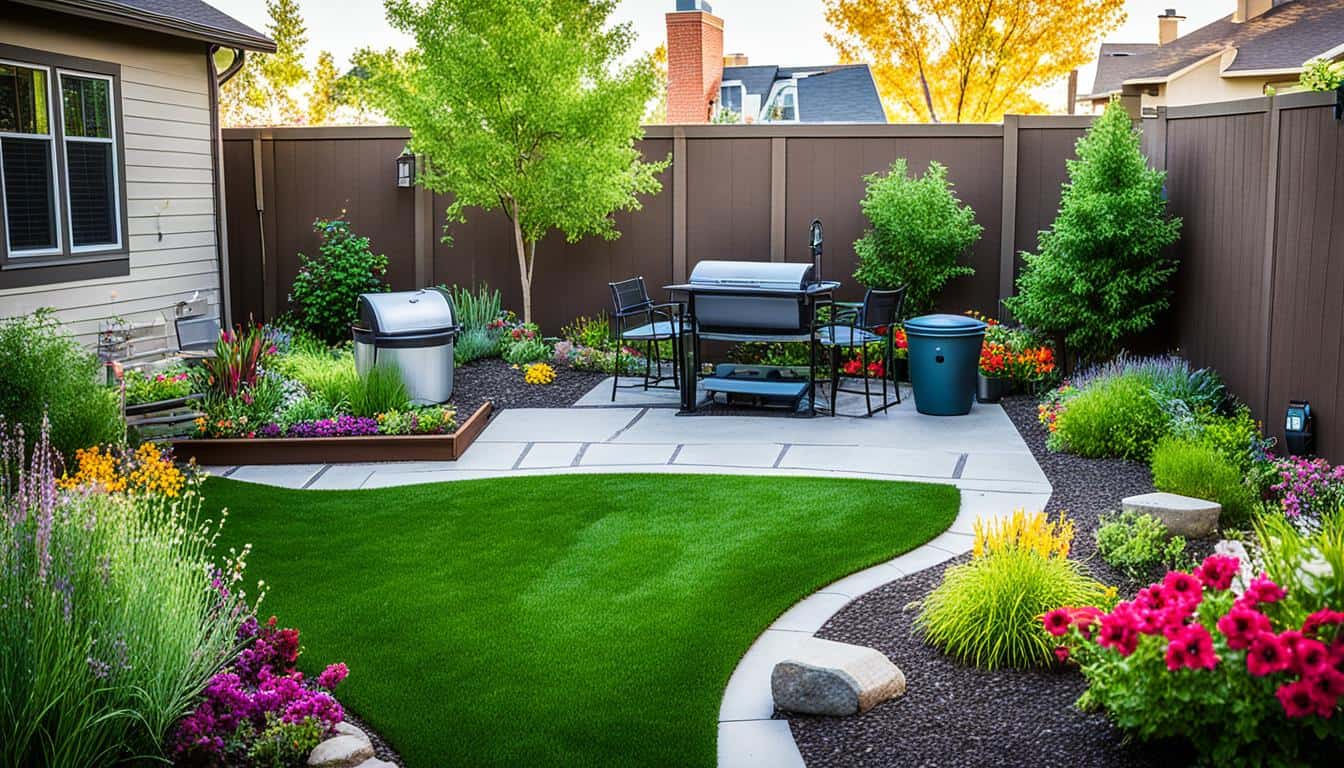
Did you know more than half of the Earth’s richest soil is gone? This loss happened in the last 150 years because of erosion. This fact shows we urgently need to garden more sustainably. A great way to do this is by landscaping in eco-friendly ways. Artificial turf is one of these smart choices. It looks like a real green lawn but is way better for our planet. Companies like Smart Turf Artificial Grass are leading this movement in the USA and Canada. They make eco-friendly landscaping both possible and attractive.
Artificial turf is made from sustainable materials. These include plant-based fibers and recycled rubber. It’s an excellent alternative to traditional lawns. By choosing artificial grass for your garden, you can make your outdoor area look great. At the same time, you help the environment. It saves water and lowers carbon footprints. Making this choice shows care for our planet and future generations.
Key Takeaways
- Artificial turf reduces water consumption compared to traditional lawns.
- It decreases reliance on harmful pesticides and fertilizers, benefiting local ecosystems.
- Using native plants in landscaping requires fewer resources and encourages biodiversity.
- Conserving water is critical as only 2.5% of the Earth’s water is freshwater.
- Incorporating solutions like rainwater harvesting can maximize water use efficiency.
Understanding Eco-Friendly Artificial Turf
Eco-friendly artificial grass is a big step forward in green landscaping. It’s tough yet gentle on the planet. It looks and feels like real grass but is made from safe, synthetic materials. This includes things like polyethylene and eco-friendly rubber, making your lawn green and clean.
The best part about eco-friendly turf is how long it lasts. Unlike real grass that needs constant care, artificial grass can go up to 20 years. This cuts down on environmental harm from replacing and making more grass. Plus, it stays green without toxic chemicals, keeping ecosystems safe.
Choosing artificial grass helps cut down on carbon emissions too. Traditional lawns need lots of gas-powered work, which is bad for the air. Artificial turf needs no such work, saving about 480 pounds of carbon emissions a year. It also keeps harmful stuff out of our waterways.
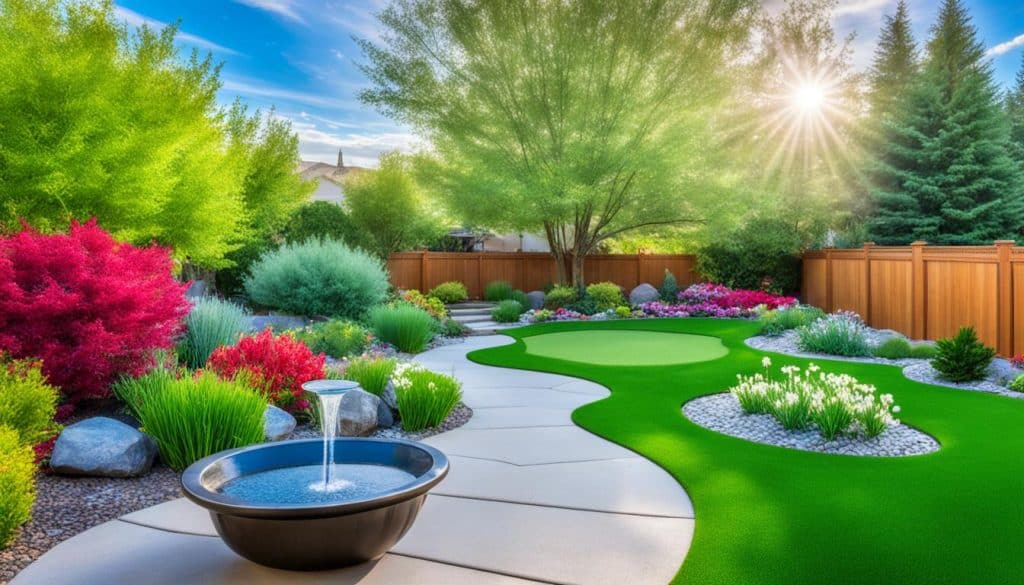
Even though eco-friendly turf costs more at first, it saves money and water in the long run. The average family spends about 320 gallons of water a day on their lawn. With artificial turf, I save water and enjoy a beautiful, allergy-free yard.
| Aspect | Natural Grass | Eco-Friendly Artificial Turf |
|---|---|---|
| Longevity | 1-5 years | 10-20 years |
| Water Usage | High | Minimal |
| Maintenance Costs | Ongoing | Lower |
| Environmental Impact | Higher due to chemicals | Lower; Made from recyclable materials |
| Allergen Presence | Higher (pollen) | Lower |
Key Environmental Benefits of Artificial Grass
Today’s eco-conscious homeowners love the environmental benefits of artificial grass. By choosing it, I help save a lot of water. Every year, households can save up to 22,000 gallons of water. This is very important in places where water is scarce.
The good things about synthetic grass also include less carbon footprint. Making it uses modern materials that help our planet. This choice cuts down on the need for gas-powered tools. It also means fewer nasty emissions go into our air.
Thinking about my family’s health makes artificial grass an easy choice. It means no dangerous chemicals, which is better for kids and pets. It uses rubber grains for durability. So, my yard stays nice for a long time and doesn’t attract bugs.
Here’s a look at the benefits of choosing eco-friendly artificial grass:
| Benefit | Description |
|---|---|
| Water Conservation | Up to 80% savings on water compared to natural grass. |
| Reduced Carbon Emissions | Less reliance on gas-powered equipment cuts emissions. |
| Cost Savings | Over 50% reduction in maintenance costs in five years. |
| Longevity | A lifespan of up to 25 years ensures lasting investment. |
| Minimal Maintenance | Requires only occasional brushing and rinsing. |
| Enhanced Safety | No harmful pesticides contribute to a safe environment. |
| Soil Conservation | Helps prevent waterlogging and soil erosion issues. |

Eco-Friendly Landscaping Tips
Making your yard eco-friendly is both rewarding and good for the planet. I use sustainable methods to help the environment and cut down my carbon footprint. Here are some top eco-friendly landscaping tips that really work.
Choosing Non-Toxic Materials
It’s important to use non-harmful materials in your yard. I look for products that are low in chemicals and come from green sources. This helps reduce pollution. By picking natural fertilizers and pest control, I keep my garden and wildlife safe.
Incorporating Native Plants
Adding local plants to my garden boosts biodiversity and helps the ecosystem. These plants need less water and are easy to care for in my climate. Using them can cut your water use by half, saving resources and helping animals.
Utilizing Rainwater for Irrigation
Using rainwater to water my plants has been a game changer. By catching rain in barrels, I use less tap water and it’s free. This method lowers my water bill and is better for my plants. Rain gardens also help by absorbing rain and cleaning pollutants, fighting water runoff.

Water Conservation and Cost Savings
Choosing eco-friendly turf improves my lawn’s look and helps save water. Artificial grass lets me use much less water than regular grass. This change saves thousands of gallons of water each year. It also supports sustainable landscaping, which is good for the planet.
Reduced Water Usage
Eco-friendly turf stays green without needing lots of water. This is especially important in dry places. By using artificial grass, I don’t have to water my lawn all the time. This matches with xeriscaping, which cuts down on water use. I enjoy a beautiful garden and help save water resources.
Lower Water Bills Over Time
Switching to artificial grass has lowered my water bills. Homeowners can save around 8-10% on their water bills by using less water. Adding in the savings from not having to mow or fertilize, I save a lot of money. This choice makes financial sense, letting me spend on other important things.
